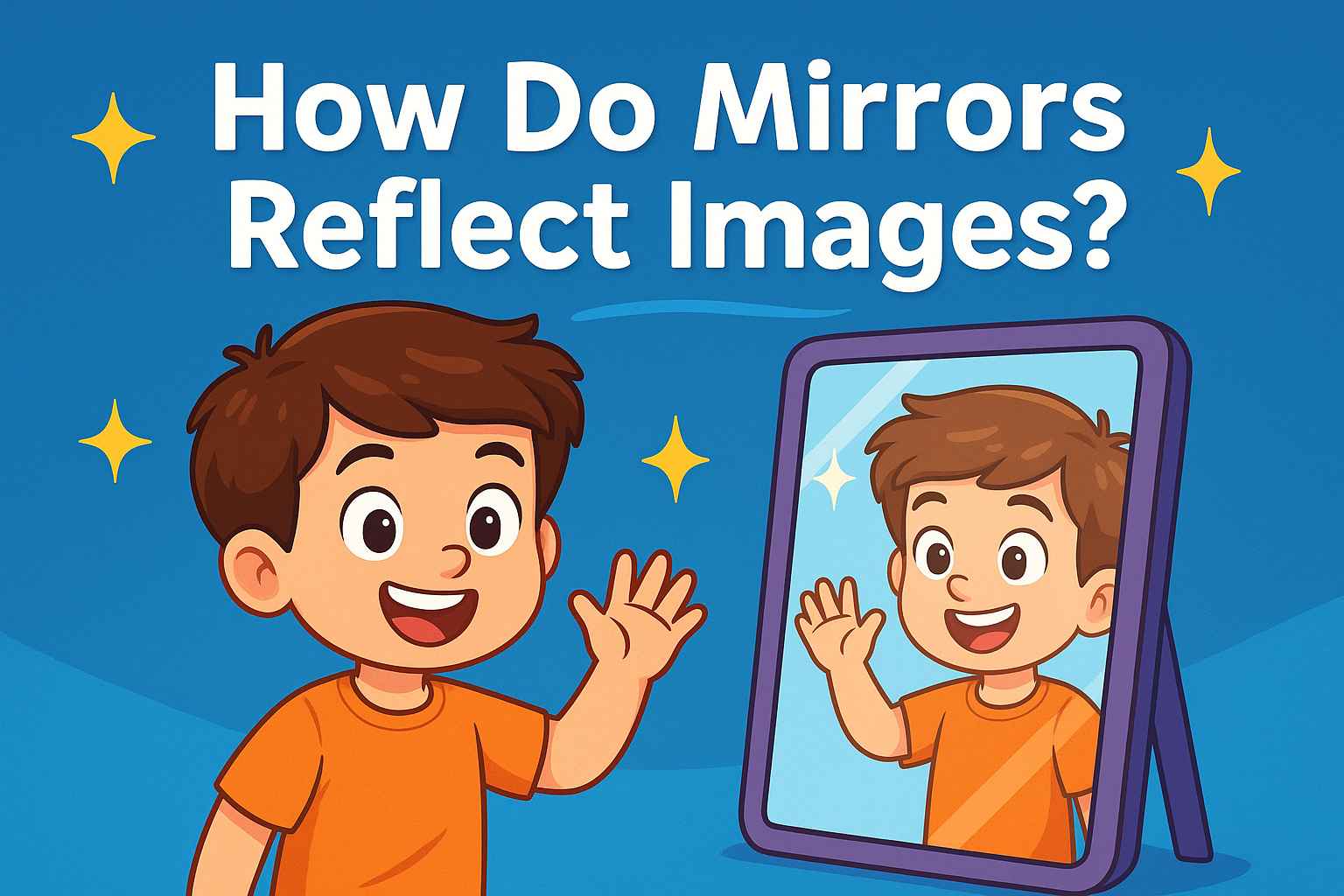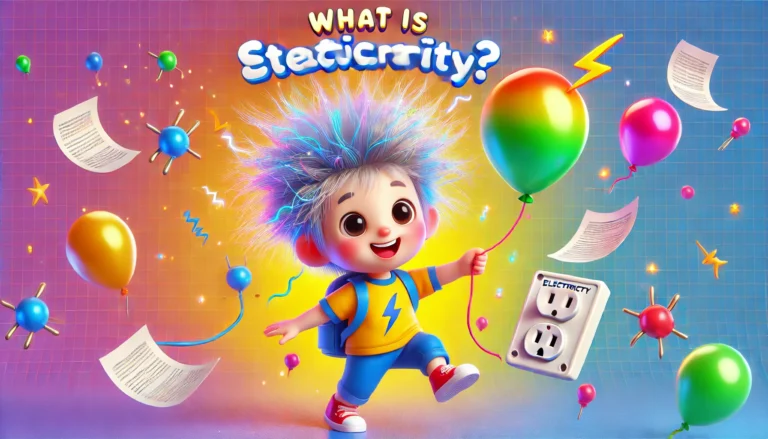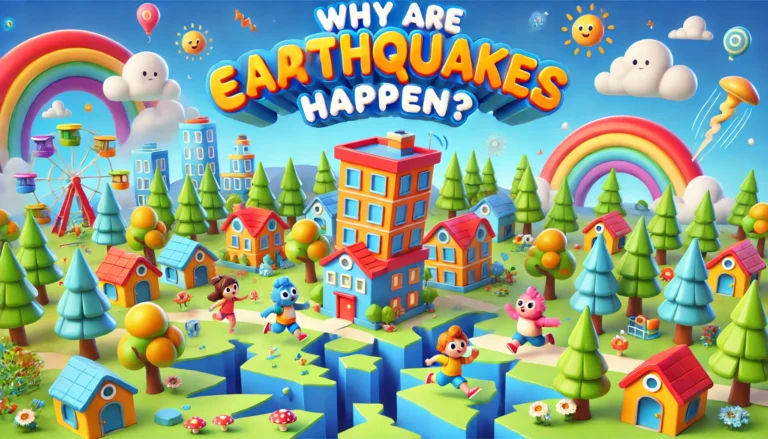
Learn how mirrors reflect images using the science of light and reflection! Easy, fun, kid-friendly explanation with facts, quiz, and a simple home experiment.
The Magic of Light and Reflection ✨
Have you ever stood in front of a mirror and waved at yourself?
Or made funny faces just to see your reflection copy you perfectly? 😄
Mirrors may seem like they hold a tiny you inside them… but really, they are showing you something amazing about light and reflection!
Let’s explore the wonderful science behind mirrors! 🌟
🌞 What Is Light?
Light is a form of energy that travels in straight lines.
It comes from sources like:
- The Sun ☀️
- Light bulbs 💡
- Flashlights 🔦
When light hits an object, it can be:
- Absorbed (taken in)
- Transmitted (passed through)
- Reflected (bounced back)
Mirrors are special because they reflect almost all the light that hits them!
🪞 So How Does a Mirror Work?
A mirror has a very smooth and shiny surface, usually made of glass with a thin layer of metal (like aluminum or silver) behind it.
When light from your face reaches the mirror:
- The smooth metal layer reflects the light.
- The reflected light travels back to your eyes.
- Your brain reads that light and says,
“Hey! That’s me! 👀”
That’s how you see yourself!
A mirror doesn’t create your image —
it simply bounces light back to you.
🔄 Why Is the Left Side Right?
You might have noticed something curious:
Mirrors flip images from left to right!
If you raise your right hand, the reflection raises what looks like the left hand.
But really, the mirror is just switching front to back — not left to right.
Your brain thinks it’s flipped sideways, but it’s actually flipped depth-wise!
🧠✨ Mind-bending, right?
⭐ DO YOU KNOW?
- The world’s biggest mirrors are used inside telescopes to look at distant stars and galaxies! 🌌
- Some animals, like dolphins and magpies, can recognize themselves in a mirror — just like humans! 🐬
- Before mirrors, people used shiny metal or still water to see their reflections.
🌈 FUN SCIENCE FACTS!
✨ A surface must be extremely smooth to reflect clearly. Even tiny bumps can scatter light!
🪞 The shiny back layer of a mirror is called the reflective coating.
💡 A mirror doesn’t change the light’s color — that’s why your reflection looks exactly like you.
🎯 MINI QUIZ — Test Your Mirror Magic!
1️⃣ What does a mirror do with light?
a) Eats it
b) Reflects it
c) Stops it
Answer: b
2️⃣ What is the smooth, shiny layer behind the glass called?
a) Reflective coating
b) Mirror glue
c) Light juice
Answer: a
3️⃣ Mirrors flip images in which direction?
a) Front to back
b) Left to right
c) Up to down
Answer: a
🧪 TRY-AT-HOME EXPERIMENT!
You will need:
- A small mirror
- A flashlight
- A dark room
Steps:
- Turn off the lights.
- Shine the flashlight at the mirror.
- Move the mirror to bounce the light onto a wall.
You have just controlled light using reflection — like a light magician! ✨🔦
🌠 Encouragement to Explore
Next time you look in a mirror, remember:
You’re not just seeing yourself—
you’re watching light travel, bounce, and return in a flash! ⚡
Try exploring reflections in:
- Shiny spoons 🥄
- Water 💧
- Windows 🪟
Science is happening all around you — keep observing! 👀🌈






